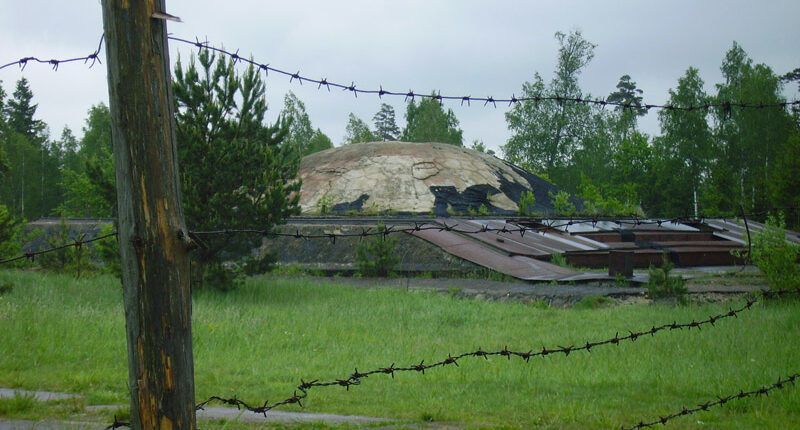Share this @internewscast.com
Deep within the forests of western Lithuania lies a haunting reminder of the Cold War era — an underground nuclear missile base where three lives were tragically lost.
Nestled in Žemaitija National Park, approximately 30 miles from the Baltic Sea, the Plokštinė Missile Base once held Soviet R-12 Dvina missiles targeted at Western Europe.
Today, it’s the park’s top tourist draw, transformed into the Cold War Museum and attracting 35,000 visitors in 2024 alone.
But behind the eerie exhibits of Lenin statues, Soviet flags and dimly lit tunnels lies a deadly history.
Aušra Brazdeikytė, a museum guide who grew up in the vicinity, shared with CNN: “A soldier tragically fell to his death when his safety equipment failed during routine maintenance.”
“Two other soldiers died during a nitric acid spill while trying to refuel the missile.”
Completed in 1962 after two years of construction involving more than 10,000 workers, the base was one of the USSR’s most secretive sites.
The base was shielded by barbed wire and an electric fence stretching two miles, remaining unnoticed until US satellites detected it in 1978—by which point disarmament treaties had led to its decommissioning.
The entrance, still adorned with a Russian sign saying “Please, wipe your feet,” opens to a maze of rooms and four silos descending 100 feet into the earth.
Visitors can now peer into the abyss of one of the shafts, which never launched a missile but claimed lives during service.
The location once accommodated about 300 soldiers, with a nearby ghost town later oddly transformed into a children’s summer camp named Žuvėdra (“seagull”) following the base’s closure.
Its bus stop still bears a mural of a gnome on a mushroom holding a flower.
After Lithuania broke free from Soviet rule in 1990, the base was abandoned and stripped for scrap.
It reopened as a museum in 2012 with EU funding, giving the public rare access to a facility once designed for nuclear war.
Today, the stark remains of the Plokštinė base — its mud‑covered hangars resembling ancient pyramids — stand in sharp contrast to the idyllic lakes and forests around it.
The region, once a militarized zone bristling with rockets, is now a gem of slow travel in Lithuania.
The museum’s exhibits walk visitors through propaganda, weapons technology and daily life under Soviet control.
Lifelike mannequins dressed as grim soldiers add to the unsettling atmosphere, making the underground tour feel like stepping back into the Iron Curtain era.
For locals like Brazdeikytė, memories of the base run deep.
She recalls soldiers becoming part of everyday life, often working on nearby collective farms but never daring to talk about what lay beneath the forest floor.
“We worked alongside soldiers from different Soviet republics at collective farms, but never discussed military topics,” she told CNN.
The base’s location in Plokštinė forest was chosen carefully by Soviet planners: the sandy soil was easy to excavate, nearby Plateliai Lake provided water for cooling systems, and the sparse local population meant fewer eyes watching.
Visitors today can combine the chilling underground tour with the natural beauty above ground.
Žemaitija National Park offers cycling and hiking trails, and Lake Plateliai is a favorite spot for campers and nature lovers.
The nearby town of Plateliai is home to an 18th‑century wooden church and even a Mardi Gras museum with its famous carved masks.
But deep beneath the birch trees and Baltic pines, the echoes of the Cold War — and the lives lost in its shadow — linger in the silence.

























